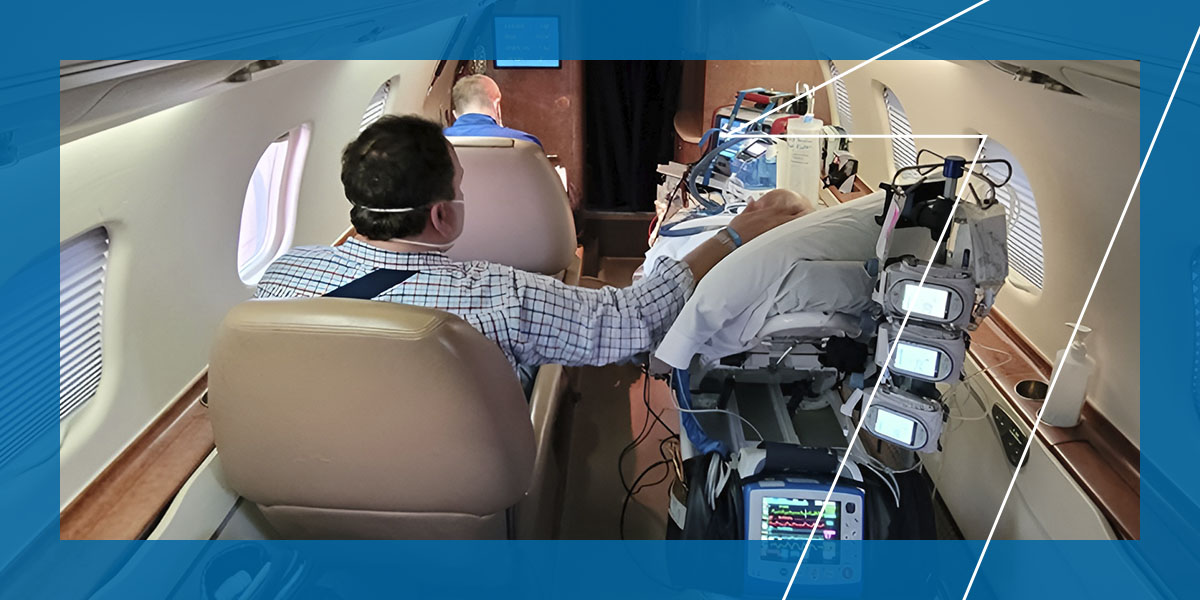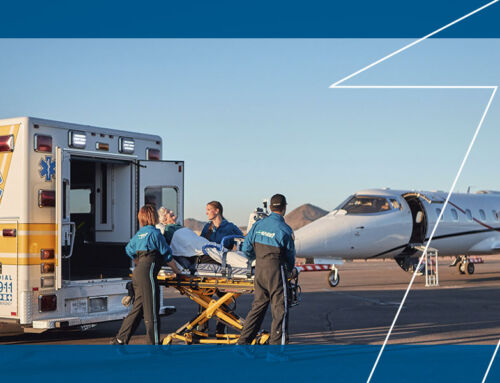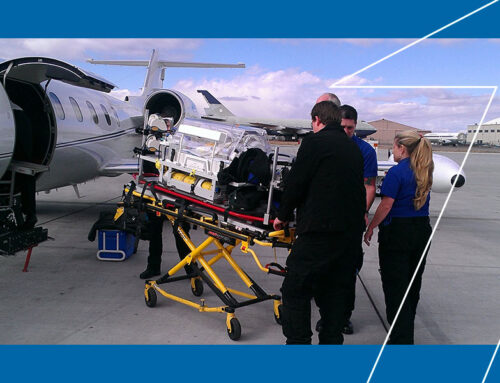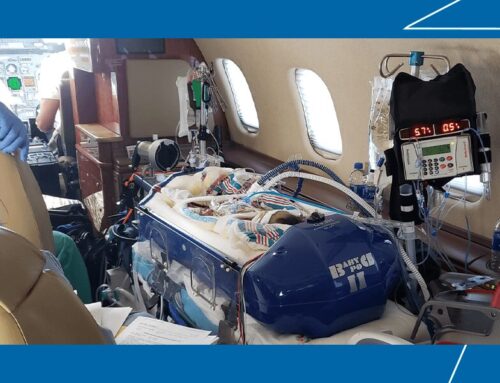Flying can be stressful enough without additional health considerations. When you have special medical requirements, you must know what you need to fly. If you require oxygen while flying at higher altitudes, prepare beforehand. Here’s everything you should know when taking oxygen on a flight.
Why Fly With Supplementary Oxygen?
Many people need supplementary oxygen to support their breathing during flights. Medical conditions like severe asthma, emphysema, chronic obstructive pulmonary disease (COPD) and pulmonary fibrosis can impact oxygen intake.
These conditions can prevent your lungs from absorbing oxygen efficiently, causing low blood oxygen levels. Low oxygen levels can cause fatigue, shortness of breath and life-threatening complications. Supplementary oxygen delivers oxygen into your bloodstream for better, healthier breathing.
Additionally, anyone flying with neuromuscular disorders or cardiovascular conditions might need supplementary oxygen to support organ function. Ample oxygen is essential for sustaining bodily functions, especially during flying — oxygen levels can decrease with altitude. Supplementary oxygen is vital for anyone flying with health conditions that could affect their systems in the air.
Can You Carry Oxygen on a Plane?
Yes, you can carry oxygen on a plane but only FAA-approved portable oxygen concentrators (POCs). Passengers must bring FAA-approved portable oxygen concentrators (POCs) for supplementary oxygen on commercial flights. POCs take in nearby air, removing nitrogen and giving users a higher oxygen concentration through plastic tubes. You can bring a POC device on your flight if it meets FAA regulations.
Commercial airlines also allow approved ventilators, respirators and CPAP machines on flights. These devices help protect users from harmful airborne particles or help them breathe. Always double-check with your airline to ensure they permit your medical devices on your flight.
Additionally, you should always complete and bring documentation for your device. Look for the airline’s POC form or forms for other medical devices. Filling these out allows you to fly with necessary equipment that meets regulations.
Potential Dangers and Risks
The FAA prohibits oxygen tanks on planes due to the risks compressed air poses to flight safety. Airlines limit the amount of oxygen allowed through POC regulations to minimize the risk of flying with oxygen devices on commercial planes. Oxygen tanks are hazardous on flights due to:
- Flammability: Oxygen is highly flammable. Allowing oxygen tanks on commercial planes creates potential fire risks. If the tank is mishandled or has a leak, the oxygen could ignite after contacting a heat source.
- Storage needs: Another risk for airlines is storing and handling oxygen tanks. Some aircraft will carry oxygen for the flight crew but no passengers. Tanks need the right securing equipment to prevent them from falling over during flight. Additionally, they must be stored in areas the crew can access easily.
- Navigation interference: Certain oxygen device technologies may interfere with aircraft navigation and safety systems. While the risk is minimal, airlines want to reduce this hazard as much as possible. Regulating oxygen devices, tank sizes and technologies helps airlines decrease unexpected variables for safer flights.
The Benefits of Having a Medical Escort When Flying With Oxygen

An onboard medical escort can provide the support you need, helping you fly safely and comfortably. Flying with oxygen can be stressful — a trained professional helps prevent emergencies and provides some company on the flight. Whether you have minimal oxygen needs or require more support, here’s how flying with a medical escort can benefit you:
- Specialized care: Medical escorts tailor specialized care to your unique needs. They can monitor vitals and administer medication, making the flight more comfortable for passengers with additional health needs. Personalized assistance makes flying easier and less stressful, reducing strain on your body.
- Emergency assistance: Medical escorts are trained to handle emergencies quickly and effectively. Flying with a medical escort gives you direct access to a professional who can minimize risks and help you recover from health-related incidents during your flight.
- Support: A medical escort gives you the physical and mental support to fly worry-free. An experienced presence flying with you the whole way is an invaluable confidence booster. Additionally, medical escorts can coordinate with airline staff during emergencies, getting you wheelchair assistance or additional oxygen supplies if needed.
- Clear communication: A medical escort can handle communications between you, airline personnel and medical professionals. They’ll ensure all parties understand your medical needs so you can stay comfortable during your trip.
Using an Air Ambulance While on Oxygen
Air ambulances offer critical support for individuals with severe or complex medical conditions. While you can take POCs on commercial planes, an air ambulance gives you access to elevated care and resources. With advanced equipment and highly trained medical teams, air ambulances provide comprehensive medical care during transport.
Whether you need supplemental oxygen or more involved medical equipment, air ambulances can help you reach your destination safely. During the flight, you can receive care from specialists like respiratory therapists, critical care nurses and paramedics, all capable of providing tailored interventions and support.
Air ambulances also offer supplemental oxygen delivery systems and high-flow oxygen therapy for pre-flight treatment. You can receive treatment while flying with essential support, enjoying care designed just for you.
Oxygen Limitations on an Air Ambulance
While air ambulances can provide you with oxygen and medical support during air transport, they still have oxygen limitations. Air ambulances can act as a complete intensive care unit during the flight but still must follow oxygen-carrying regulations.
Talk to your case manager before your flight if you need more oxygen than the FAA allows. They can work with the air ambulance to administer the right amount of oxygen. This might mean taking more fuel stops or using one of these oxygen delivery alternatives:
- Low-flow oxygen therapy
- Medium-flow oxygen therapy
- High-flow oxygen therapy
- Noninvasive positive pressure ventilation (NIPPV)
- Mechanical ventilation
Suggestions for Travel Planning
Before your next trip, set up your medical plans. A travel plan helps you reach your destination safely and comfortably. Here are some tips to help make navigating travel with a medical condition easier:
- Consult the airline. Contact the airline in advance to learn their regulations and requirements. Ask them about any necessary documentation to fly with your medical equipment.
- Talk to your health care providers. Your health care providers can help you determine your medical necessities for your trip. They can also give you a check-up before you fly. If you’re flying with a medical escort, you can contact their service to schedule support while you fly.
- Arrange accommodations with the airline. Take care of your pre-boarding and seat selection well before the flight.
- Create a list of medical essentials. Make a list of your medications, essentials and equipment. Double-check everything before you leave and ensure your escort is traveling with you. Remember — your POC is not a carry-on, so you can pack a bag with everything you’ll need for the flight.
- Arrive at the gate early. Get to boarding early to make the process easier. Show the necessary documentation for your devices when requested.
Receive Oxygen Support While Flying With AirCARE1

Whether you need an air ambulance for specialized medical support or a medical escort to help you fly commercial, reach out to AirCARE1. We are more than just an air ambulance service — we’re a team dedicated to providing quality patient care and pushing holistic health to new standards. We pair unmatched medical expertise and support with human empathy and compassion.
AirCARE1 wants to make a real difference in how you fly. We have an accreditation from the Commission on Accreditation of Medical Transport Systems (CAMTS), so you can trust us to tailor medical care to your unique needs. If you’re looking for industry-leading medical support while you fly, request a quote online today!
Explore Our Other Medical Transport Resources:
Advantages of Air Medical Transports
Helping Patients with Medical Transports




